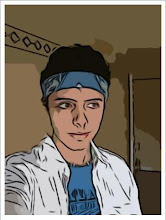“Travel, leave everything, copy the birds. The home is one of civilisations sadnesses. Ina few years humanity will go back to its nomadic state.”
-Gustave Flaubert
Having regrettably been absent during the screening of Agnes Varda’s Les Glaneurs et la glaneuse, I duly checked out another recommended film by said director, known as Sans toit ni loi, or simply Vagabond.
The film didn’t particularly strike a chord with me, but what I admire about it is its boldness. The storyline isn’t so much of a tangled web that brings you to the edge of your seat – in fact the plot is fairly minimalist – but it paints a raw, homespun portrait of peoples’ lives through the eyes of an intriguing character. In this sense, Vagabond shares certain touchstones with films I’d consider amongst my favourites, such as Lost In Translation, Genova and various films by Harmony Korine.
Varda doesn’t particularly romanticise the concept of homelessness or travelling from place to place, in my opinion. The grizzly nature of the lifestyle is depicted from the word go, where we see that the heroine Mona is dead, and the events leading up to her demise are shown following the discovery of her body.
Throughout the course of the movie, we see her becoming more raggedy and frail, and by the time of her death, she has completely given up. This is not a happy-go-lucky Bohemian Gypsy lifestyle, full of tango and belly dancing, jewellery making and painting. The girl doesn’t have joie de vivre, she honed this way of life because she was disenchanted with her office job, and resigned herself to roaming rural France by herself. This is a tragic tale, because her way of life was born out of disillusion rather than brightness, and it leads to her untimely demise.
Vagabond did, however, portray a strong sense of community. The rural area of France she roams is very close knit and the people she encounters are all very accommodating. This is perhaps the aspect of the film that most idealises Mona’s lifestyle, as she runs into a goat farmer couple who allow her to stay during the night, a tree researcher who shows Mona her work, and others. This is probably the most heartwarming part of the film, as though her lifestyle may be questioned, it is also admired and even described as noble. Overall though, this film is certainly not an evangelist of a carefree, nomadic life.




